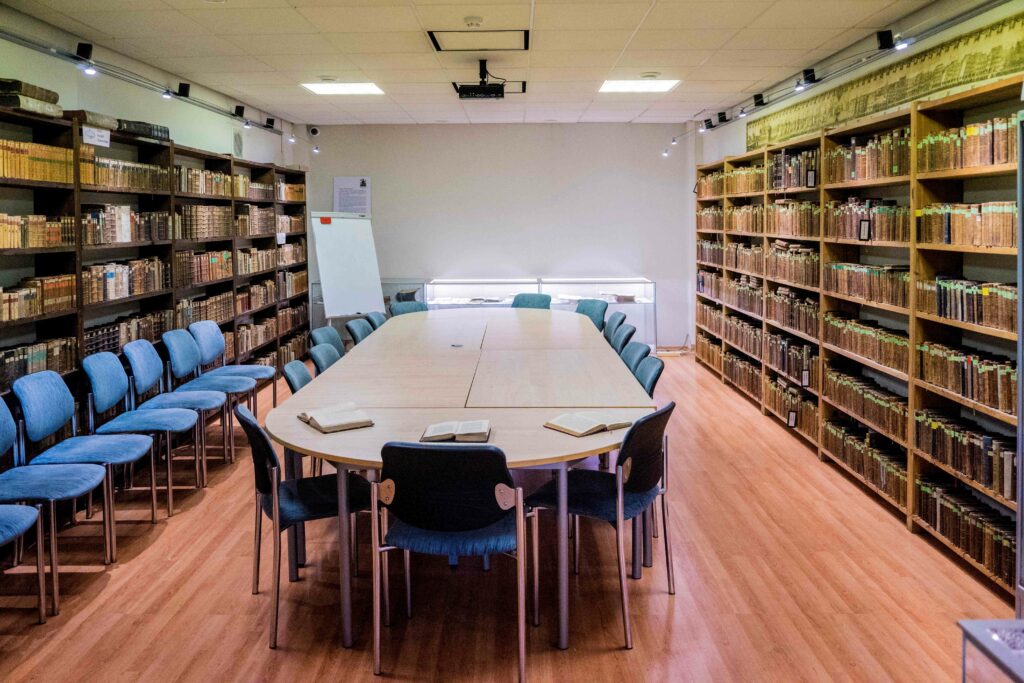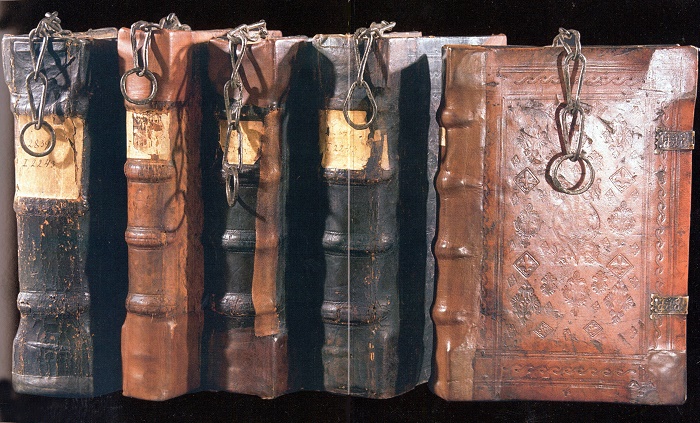The museum room is located on the first floor of the research library, at the end of the lobby. It seats up to 20 people and has desks and equipment for presentations.
The room hosts book-themed lectures. You can also order thematic lectures, workshops etc from our specialists. Please register to visit the museum room by calling 6659 451 (Kaja Tiisel).
The walls of the museum room are covered with beautiful shelves stacked with books that belonged to the collections of the Great Guild of Narva and the Narva city government. Prints from the Estonian Literature Association’s Reading Association and Art and Literature section collections are directly related to the history of our library and are kept in our library’s reserve stock.
In addition to the rare books on the shelves, there are five glass displays with rare publications printed in Estonia or in the Estonian language and beautiful examples of bookbinding from here and abroad. There are special displays dedicated to rarities and incunables from the Tallinn St Olaf’s Church library.
The Mainz Psalter (Psalterium cum canticis, Psalm 58:15) is the oldest remaining fragment of a print in the exhibit and in Estonia in general – an incunable printed onto parchment in Peter Schöffer’s and Johann Fust’s printing shop in Mainz in 1457, a page of which is used over the cover of Johannes Gezelius’ Greek-Latin lexicon printed in 1649 in Tartu. Heinrich Stahl’s first four-part handbook for the clergy (Hand- und Hausbuch) became an example for centuries – its hymn book part is the first Estonian book printed in Estonia (Tallinn, 1637). Some early prints in local dialects include the first Tartu translation of the New Testament Wastne Testament from 1686 and the first Tallinn translation Uus Testament from 1715, as well as the first Estonian bible from 1739 which had a significant impact on the development of a uniform written language and the vocabulary of Estonian. Fragments of the oldest Estonian book Wanradt-Koell Catechism (1535) and Heinrich Stahl’s first Estonian grammar (1637) have been exhibited as facsimiles.
The museum room exhibition was curated by Heli Vahing, Kaja Tiisel and Rene Haljasmäe. Oleg Karoman, Ellen Allikas, Aino Merivald, Helve Peganova, Piret Suurküla and Karin Tulve assisted in the creation of the exhibition. The exhibition is sponsored by the Cultural Endowment of Estonia.

